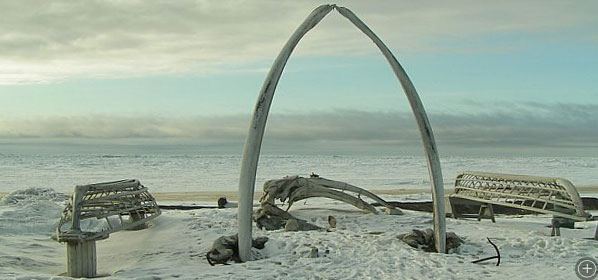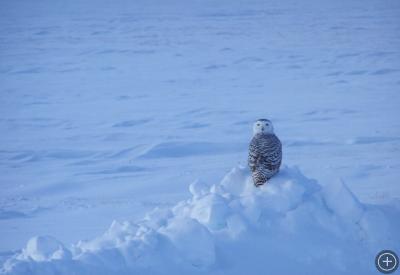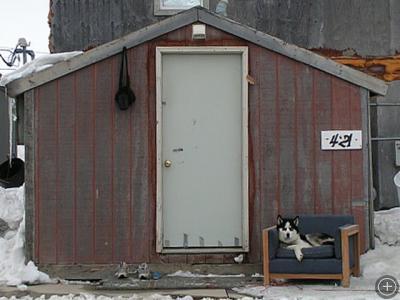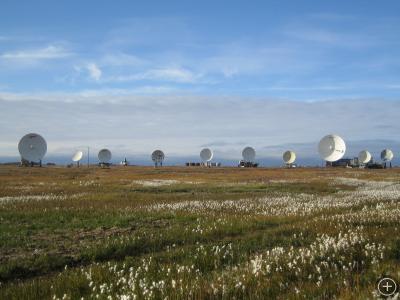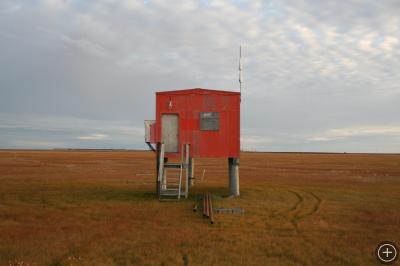Barrow, Alaska
Barrow, the northernmost settlement in the United States, is a unique American community.
In the spring, you might see groups of indigenous Iñupiaq whalers heading onto the sea ice, or in the fall out into the open Arctic Ocean as their ancestors have done for over 1600 years. If you visited during parts of the spring and summer, your internal clock might spin from continuous stretches of daylight; the constant darkness during parts of the fall and winter could be just as dizzying. If you’re lucky, auroras might offer up dazzling light displays in the sky. If you’re unlucky, a polar bear could sneak up on you.
People have lived in Barrow for about 4,000 years. The Iñupiaq people originally called it Ukpeagvik, which roughly translates into the “place where snowy owls are hunted.” Today, the city has over 4,400 residents; more than 60 percent of them are Iñupiaq. They still practice traditional ways of life, including subsistence hunting, but live solidly in the modern world, working in the nearby oil fields, for example.
There are also lots of scientists in the area. In fact, Barrow has been called “the Arctic’s science city.” From the mid-1900s to 1981, the United States Naval Arctic Research Laboratory (NARL) was a center for scientific study in the region. After it closed, several other science-related organizations sprang up, including The Barrow Arctic Science Consortium (BASC). The nonprofit BASC, created in 1995, encourages research and educational activities in Alaska’s North Slope (Barrow’s home borough) and areas of the nearby Arctic Ocean. BASC helps the local college, the North Slope Borough (the seat of government for the area), and the Utqiagvik Iñupiat Corporation (UIC) to work collaboratively in support of Arctic science.
Since 2002, a lot of the scientific study has been centered at the Science Division of the UIC, Barrow’s local village corporation. UIC Science took over a renovated NARL building and is the setting for many programs, including the Barrow Schoolyard lecture series (a science education outreach program), funded under the National Science Foundation’s Long-term Ecological Research (LTER) program. Some of the scientists who visit the area study in the Barrow Environmental Observatory, 7,466 acres of tundra owned by UIC that are permanently reserved for Arctic research.
In addition to these local organizations, others research entities are in Barrow, too. They include the U.S. Department of Energy (Atmospheric Radiation Measurement), the National Oceanic & Atmospheric Administration, and projects sponsored by the National Marine Fisheries Service, the U.S. Fish & Wildlife Service, and the Max Planck Institute for Ornithology, among others.

